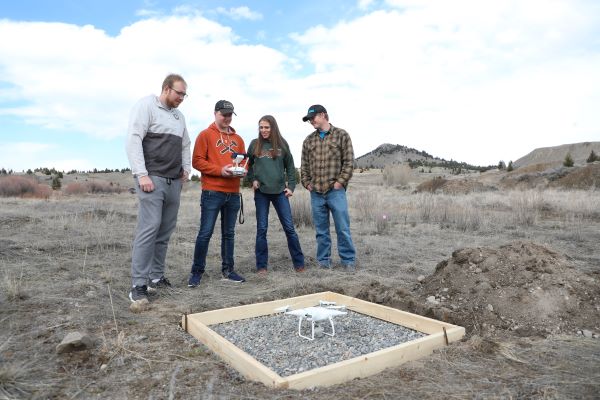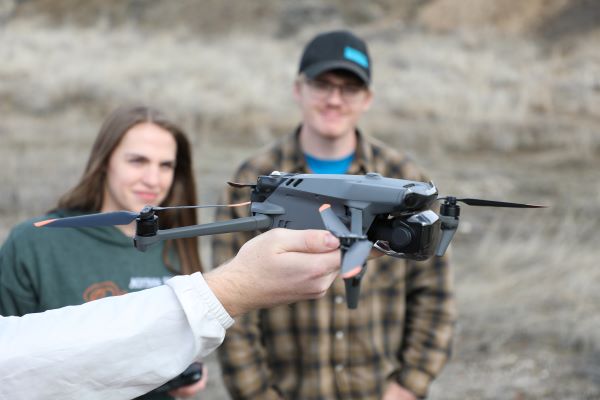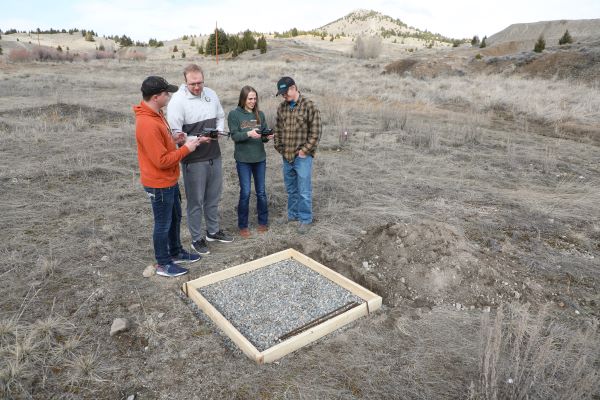Senior design team lays groundwork for drone obstacle course at Montana Tech

Construction of a new drone obstacle course will begin this spring just west of Montana Technological University’s campus.
“This drone obstacle course will provide excellent opportunities for students to improve their piloting skills in the Montana Tech drone (UAS) classes and UAS certificate programs,” said Dr. Mary MacLaughlin, a geological engineering professor who helped spearhead the development of the classes and certificate programs at Tech several years ago.

It also has the potential to become a testing field for companies in Montana’s growing technology sector.

“We have been contacted by sensor and drone manufacturers in Montana that are interested in using the site to test new technology, and this has become an integral component of Montana Tech’s contribution to the Headwaters Tech Innovation Hub,” said Dr. Angela Lueking, vice chancellor for research and graduate studies. “We envision a future field testing area that serves the hub and the region.”
The obstacle course was designed by four students as part of a senior design project. Team members include Bryan Brown, mechanical engineering; Keenan Cassidy, environmental engineering; Kendra Zander, mechanical engineering; and Riley Wirtz, civil engineering.
“The purpose of the drone obstacle course is to design an area where pilots and students can test their flight capabilities and test their drone capabilities,” Zander said.
Northwestern Energy donated power poles to the project, and students in the Highlands College pre-apprentice line program will help install them.
“That’s a very real obstacle,” Brown said. “There are lots of people walking around with drones who will encounter power lines.”
A maze course is also included to enable pilots to practice and test both operator skill and technology capability. Maneuverability and precision will be key components of the drone maze with provisions made for growth and modification in coming years.
The project will utilize “green” concrete to create the first drone landing pad. “Green” concrete reduces the amount of cement needed by substituting other materials. In 2022 it was estimated that 7-8% of global carbon dioxide emissions originated from the production of cement. By reducing cement use, the emissions generated through the project are reduced. The seniors tested different combinations of mine tailings mixed in to the concrete mixture.
“We decided to go with dry tailings because it was the strongest and by far the most reliable,” Cassidy said.
The team followed Federal Aviation Administration requirements for drone flights and was supported through guidance from Idaho National Laboratory drone personnel. The team’s plan also calls for trails and signage to be developed within the project space in future years.
“This interdisciplinary team has taken a broad set of requirements and helped to formulate a thoughtful design for a drone course that will be used for many years by Montana Tech and its collaborators. The solutions to many of the most important problems often require a broad set of expertise. I’m pleased with our group of mechanical, environmental, and civil engineering students coming together to provide this useful capability for Montana Tech,” said Dr. Jack L. Skinner, faculty mentor and department head of mechanical engineering.